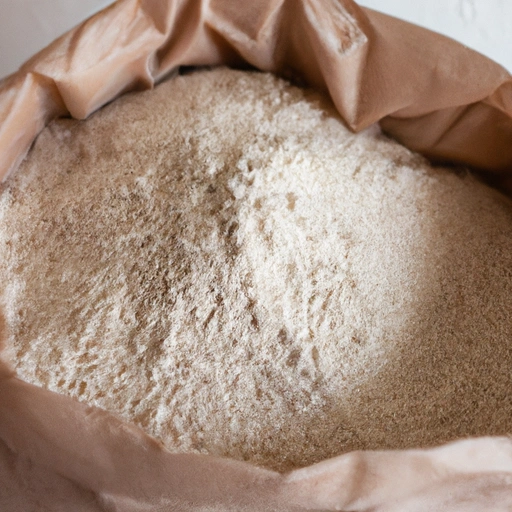Spelt Flour
Description

Spelt flour is a type of whole-grain flour made from the ancient grain spelt, which belongs to the wheat family. Known for its nutty flavor, spelt flour is often used as a healthier alternative to traditional wheat flour. It is a versatile ingredient that can be used in a variety of recipes, catering to those looking for whole-grain, nutritious options.
Common uses
Spelt flour is commonly used as a substitute for wheat flour in bread, pasta, cookies, crackers, and pancakes. It is often sought after by those with wheat sensitivities, though it is not gluten-free. Spelt flour can also be combined with other flours to create a unique texture and flavor in baked goods.
Nutritional value
Calories
One cup of spelt flour (approximately 120g or 4.23oz) contains about 455 kcal (1905 kJ).
Protein
Spelt flour is a good source of protein, offering around 13 to 15 grams per 100 grams (about 3.5 to 4.2 grams per ounce).
Fat
It contains a modest amount of fat, approximately 2 to 3 grams per 100 grams (around 0.56 to 0.84 grams per ounce).
Carbohydrates
Carbohydrates are present in the amount of around 70 to 75 grams per 100 grams (about 19.8 to 21.2 grams per ounce), with a portion of that being dietary fiber.
Vitamins
Spelt flour contains several B vitamins, notably niacin (vitamin B3), thiamin (vitamin B1), and riboflavin (vitamin B2).
Minerals
The flour is rich in minerals such as magnesium, phosphorus, zinc, iron, and potassium.
Health benefits
Spelt flour is associated with various health benefits including improved digestion due to its high fiber content, potential aid in regulating blood sugar levels, and contribution to heart health due to its profile of vitamins and minerals.
Potential risks
While spelt flour may be easier to digest for some, it still contains gluten, which makes it unsuitable for individuals with celiac disease or non-celiac gluten sensitivity. People should also be cautious if they have a wheat allergy as spelt is closely related to wheat.
Common recipes
Spelt flour can be used in an array of recipes such as artisan breads, hearty rolls, pancakes, pastas, and rustic cookies and cakes.
Cooking methods
When using spelt flour in baking, it is important to note that it absorbs less liquid than wheat flour, so you may need to adjust your recipes. It tends to produce a tender crumb and can often be used as a one-to-one substitute for whole wheat flour.
Pairing with other ingredients
Spelt flour pairs well with fruits like apples and berries, nuts such as almonds and walnuts, and sweeteners including honey and maple syrup, enhancing its natural nutty flavor.
Summary
Spelt flour is a nutritious and ancient whole grain flour with a rich history and a multitude of culinary applications. It offers health benefits due to its high fiber, protein, vitamin, and mineral content. While it is not gluten-free and may present risks for those with gluten-related disorders, spelt flour remains a favored ingredient for many bakers and chefs around the world due to its unique characteristics and versatility.